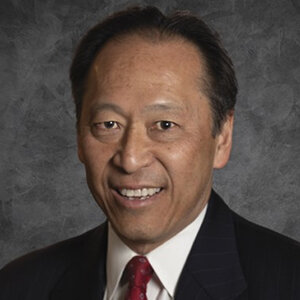Making the most of board members: How to turn passion into progress

Board membership for nonprofits and foundations is both an honor and responsibility, often accepted by individuals who feel strongly aligned with the organization’s mission. Ideally, they will leverage their admirable desire to help in order to best support that mission, drive fundraising, and safeguard the sustainability of the endowment. But in my experience serving on boards of various sizes, I’ve noticed that a surprising number of members don’t fully understand the board’s priorities and their responsibilities in meeting these objectives.
Nonprofits should ensure that their board members are aware of their roles and work with them to maximize their effectiveness in fulfilling them. Here are some important considerations:
Fiduciary responsibility
First and foremost, board members must recognize that they are fiduciaries and thus bear a legal obligation to protect the organization’s interests. While this responsibility may seem straightforward, it can be obscured by an assumption that the staff, namely the executive director and chief financial officer (CFO) or office manager, will take responsibility for all operational and financial aspects of the organization. While this is true to some extent, it’s incumbent on board members to not merely rubber-stamp decisions, especially major ones.
While most board members likely aren’t accountants and don’t bring prior experience with corporate accounting, having a solid grasp of the organization’s financial picture is integral to their fiduciary duties. This includes understanding the organization’s revenue streams, expenditure patterns, and general financial health.
It’s equally important to recognize how endowment dollars are invested and safeguarded. Endowments are a significant part of an organization’s long-term financial stability and should be handled with utmost care. So financial literacy, at least at a basic level, is critical for every board member. It is common to assume that the organization’s funds should be invested like their own which is not always the case.
Financial awareness
To address this issue, I recommend the implementation of a dashboard system—ideally created and supervised by the organization’s CFO—that offers a comprehensive yet simplified overview of the organization’s financial position.
By updating the dashboard quarterly and taking a deeper dive annually, board members can gain insights into financial trends and potential issues, aiding their decision-making process. Otherwise, they might not fully grasp key monetary considerations like cash flow in and out, accruals, or depreciation.
Driving fundraising
Beyond understanding and safeguarding the organization’s finances, board members play a pivotal role in fundraising. Personal donations, as well as contributions from a board member’s employer, often help drive the mission and demonstrate commitment to the cause. However, it’s crucial to recognize that fundraising efforts can and should extend beyond these avenues.
Effective fundraising requires creative and strategic thinking about how to leverage personal and professional connections, seek donations in kind, or acquire services at discounted rates or for free. For those organizations still holding fundraising auctions, this could entail securing room donations from individuals who own vacation rentals or offering unused condos for out-of-town guests. Connections with business owners, such as those who own wineries or restaurants, can also bring cost savings through donated products or services.
I suggest a comprehensive approach when considering who you know that could help the cause. That might include conducting a detailed search through your LinkedIn network or even perusing the list of people you send holiday cards to each year.
Employer engagement
Board members should also proactively engage their employers to support the organization’s mission. Prior to board membership, it’s important to understand your company’s policies on charitable support. Being an assertive advocate can help secure additional resources, so make sure to explain the organization’s mission as well as how supporting it aligns with your company’s values and can provide additional benefits.
Companies often set aside a specific budget each year for charitable contributions. Failing to be proactive could mean that the annual budget is already pledged by the time you ask, and you would need to wait until the following year to receive any consideration.
When board members are genuinely passionate about the cause, it translates into their fundraising requests, making appeals more persuasive to potential donors—whether they are friends, family members, business associates, or company leaders.
Guidance and support
Since board members often don’t receive sufficient education to fully understand their critical roles and responsibilities, a comprehensive consulting service can help bridge the gaps. I recommend seeking out a firm with a strong holistic understanding of what a board should focus on to further the organization’s mission.
Services might range from reviewing essential documents like the investment policy statement and gifting/spending policy to evaluating the overall fundraising strategy. A detailed “check-up” of the board can identify strengths and weaknesses, while helping to prioritize efforts for maximum impact.
Optimal effectiveness
Being a board member comes with considerable responsibility. Passion is a great first step, but optimal effectiveness also requires a comprehensive understanding of the organization, including its finances and operations. The most successful board members think creatively and strategically, conscientiously leverage available resources and exude their enthusiasm—all to best support the organization’s mission, drive fundraising, and safeguard the sustainability of the endowment.
Harmon Laurin is a senior wealth advisor at Mercer Advisors. All expressions of opinion reflect the judgement of the author and are subject to change.





